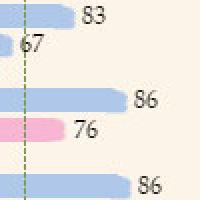Three of History's Best Charts Ever According to The Economist
Check out the December 22nd 2007-January 4th 2008 issue of The Economist. You probably remember it from the newsstands: it's got Mao in a Santa's hat. It's also got a great article "Worth a thousand words" about what they call "the best charts ever" - and guess what? They are all from the 19th century!
Check out the December 22nd 2007-January 4th 2008 issue of The Economist. You probably remember it from the newsstands: it's got Mao in a Santa's hat. It's also got a great article "Worth a thousand words" about what they call "the best charts ever" - and guess what? They are all from the 19th century!
The 3 visualizations that The Economist described as "three of history's best" include...
1. Florence Nightangale's 1858 graphic demonstrating the factors affecting the lives (and death rates) of the British army (which resulted in a graphic type called “Nightingale's Rose” or “Nightingale's Coxcomb”). She showed in a visual graphic that it wasn't wounds killing the highest number of soldiers - it was infections.
2. Charles Joseph Mindard's very famous 1861 graphic depicting the Russian campaign of 1812 - Tufte called it the “the best statistical graphic ever drawn”. Ever since I first saw this, I've loved it. What a dramatic story it tells.
3. William Playfair's 1821 chart comparing the “weekly wages of a good mechanic” and the “price of a quarter of wheat” over time. He was one of the first people to use data not just to educate but also to persuade and convince.
You can quibble with some of the technicalities of each of these charts, certainly. But what's amazing to me (not a data visualization expert but certainly an admirer of those that are) is that the science of visual data analysis, which often feels so new, has it roots so deep in history. It does prove the old adage: a picture is worth a thousand words. And has been for quite a long while.



